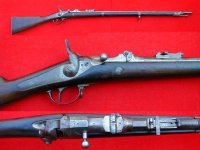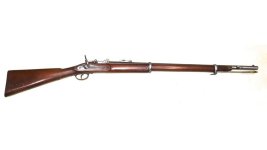ColourCaseHardened
Member
On the antique guns, what is the longest timeframe you have observed for still having a factory rework stamp on a gun?
I was looking at a Model 1-1/2 recently that had what I gathered to be a 1976 rework stamp? Is this possible?
I was looking at a Model 1-1/2 recently that had what I gathered to be a 1976 rework stamp? Is this possible?





